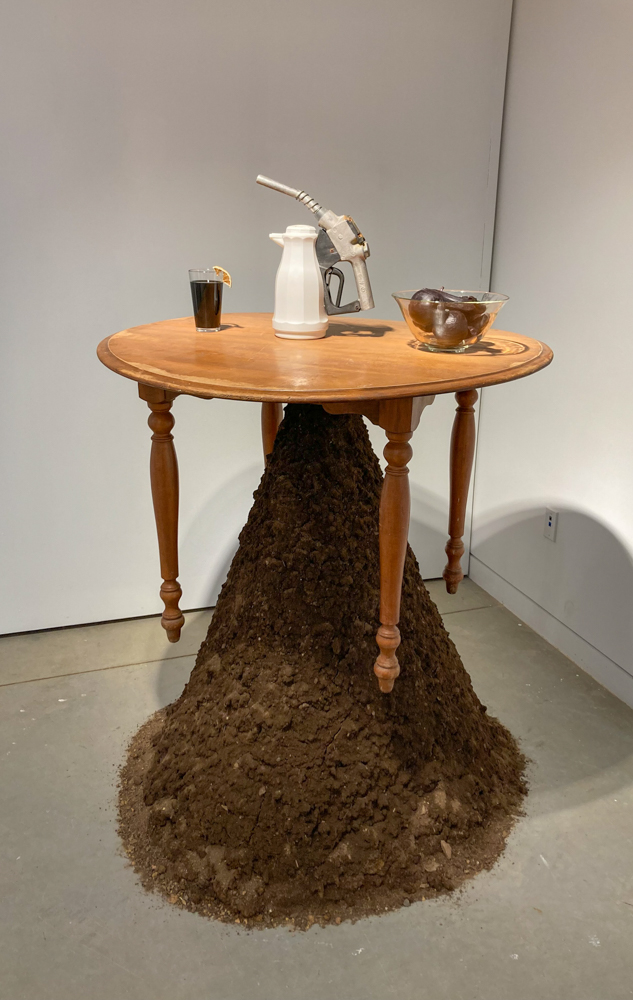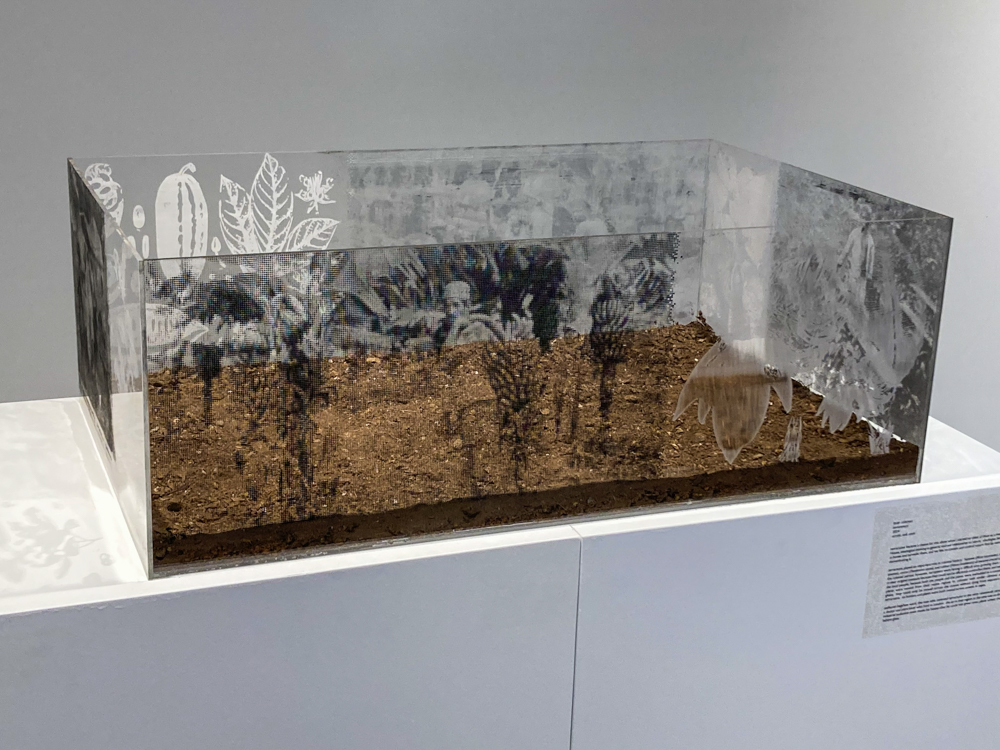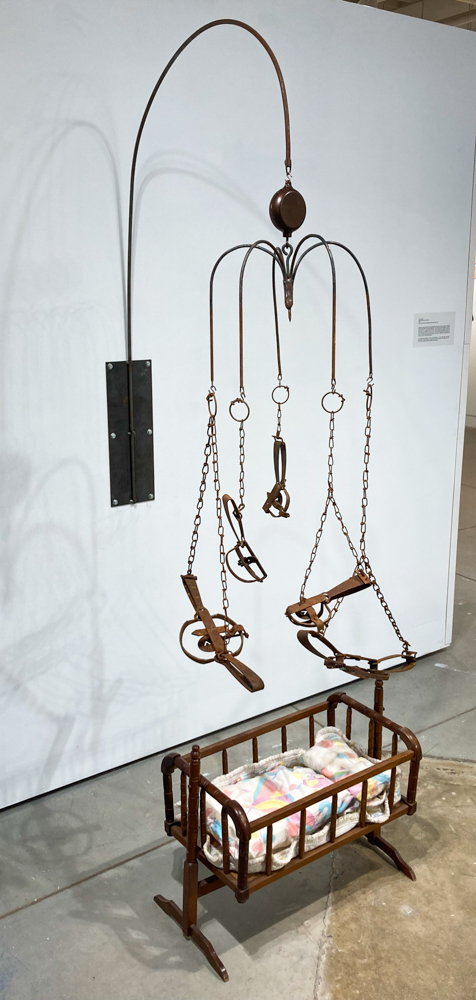OIKOS UMBRA: queering the House of Nature and the nature of house with grief and rage
Exhibition dates: December 2 - 6, 2024
Closing reception: Thursday, December 5th, 5:00 - 7:00 p.m.

breakfast in (s)Oil, found table, found pitcher, found gas pump, used 18-wheeler motor oil, petroleum-based wax, lemon wedge, fruit bowl, steel, wire mesh, soil, stoneware and steel wire, 2024

terroirarium, acrylic, soil, soot, 2024

kill the Coyote save the Child, found coyote traps, found bassinet, mobile music box, steel, 2023
Artist Statement
humans on this planet are facing profound and interconnected social and ecological crises. these problems in part stem from and are perpetuated by hierarchical ideologies that define Human and Nature as specific, separate, and limited entities. ultimately, these ideologies are ways of seeing the world that can be changed. in my experience, two important ways that a change of perspective can occur are through the powerful emotions associated with grief and rage. both of these sets of affects are altered states that can queer one’s phenomenological experiences and lead to a shift in priorities, values, and actions.
i have a background in ecology and environmental activism. the greek roots of the word ecology are oikos and logos, translated as the study of the house. but how we conceptualize this “house” we call nature matters. in this body of multidisciplinary artwork, the Oikos signifies the system of hierarchical ideologies such as colonialism, heteropatriarchy, white supremacy, and conceptions of a reified Nature that have led to the catastrophic levels of destruction we are experiencing throughout the world today.
using the suppressed affects of grief and rage, this art-based body of research attempts to queer the quotidian setting of the modern house, framing it as a space that in many ways physically embodies and perpetuates these ideologies normalizing and invisibilizing the violences that are required for modern living. some of the inspiration for the work comes from my personal experiences of social inequality, ecological loss, and the death of my father, who was a big influence for me in my love of both the natural world and art.
the second half of the title, Umbra, is the darkest part of a shadow. Oikos Umbra shows the shadow side of the houses we frequent every day, the often unexamined ideologies surrounding what it means to be a human in this world. moreover, it illustrates the underutilized power of eco-social grief and rage as perception-shifting and thus world-changing processes–in effect using the “negative space” of these repressed affects to render a larger image of possibility.